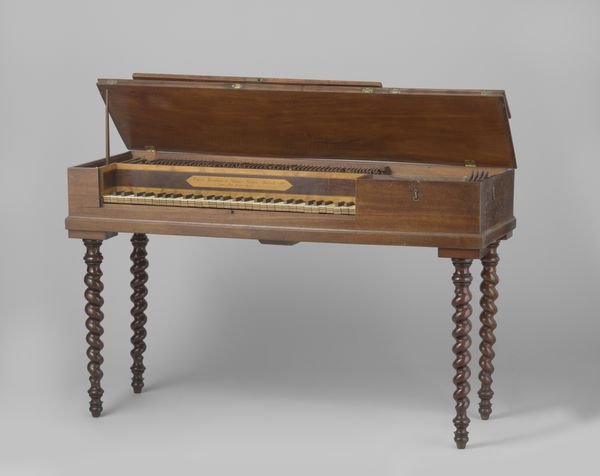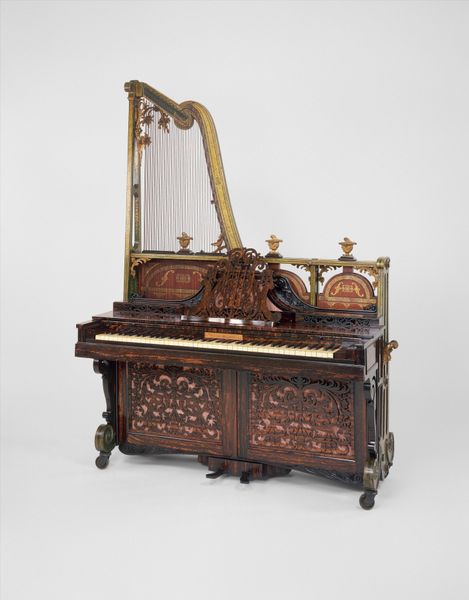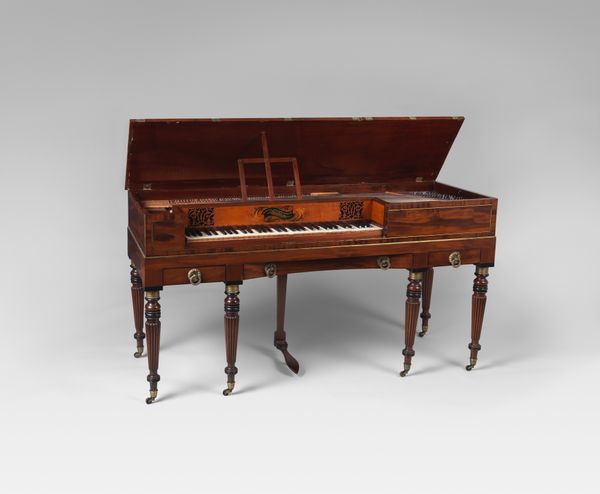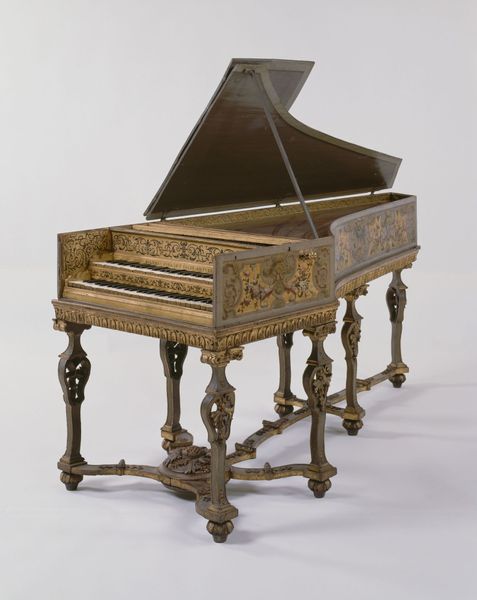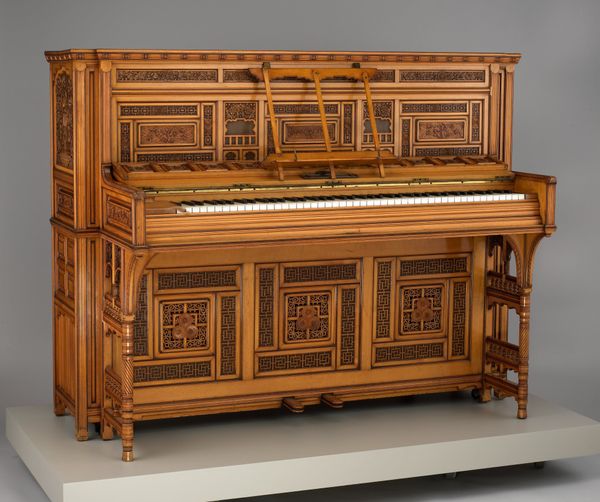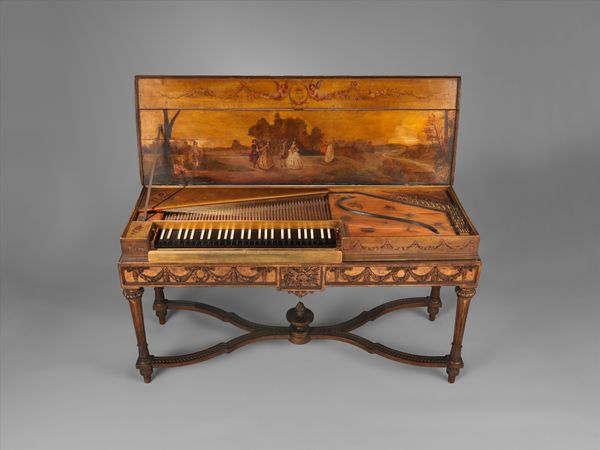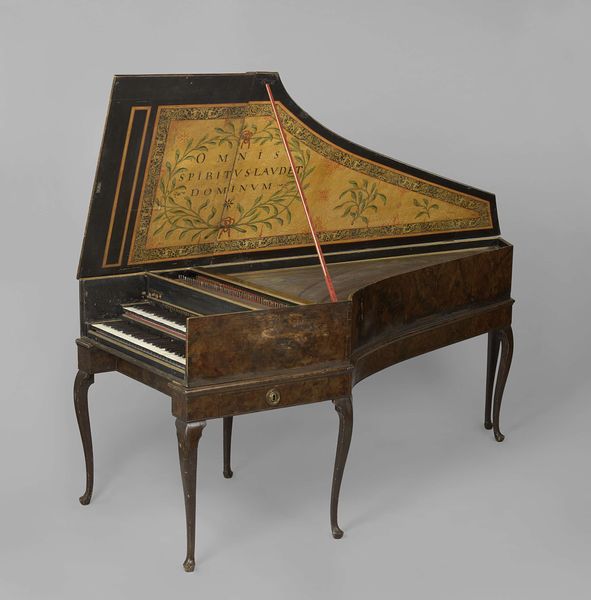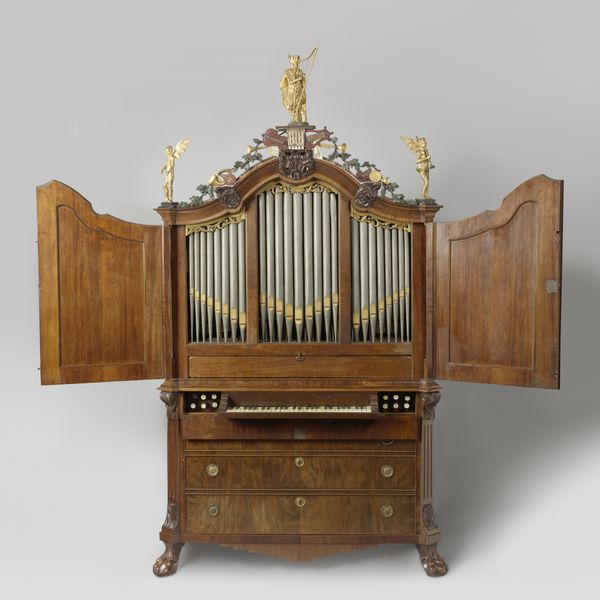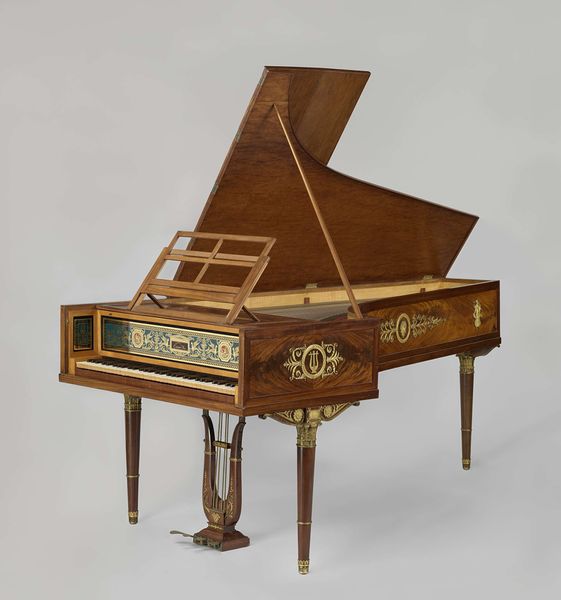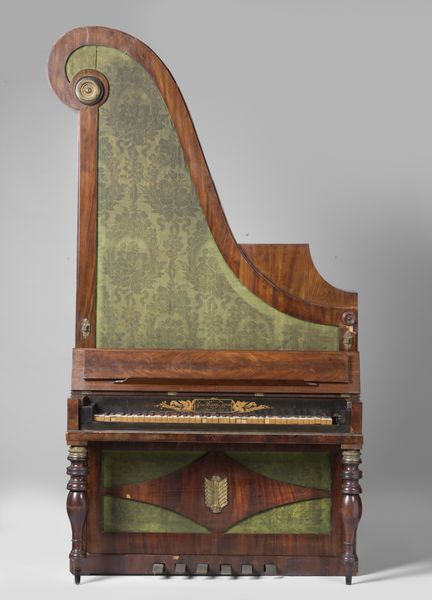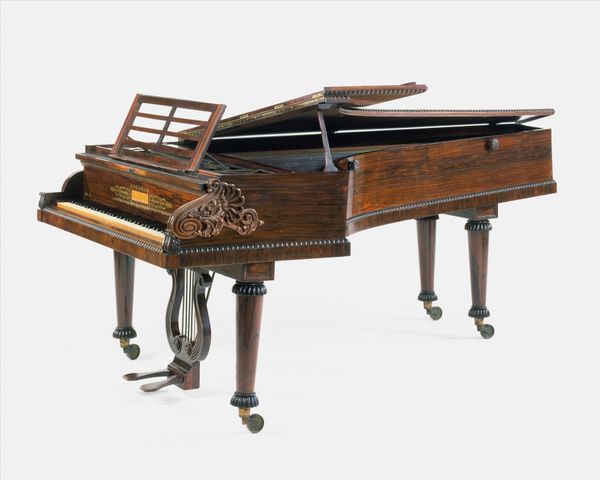
carving, tempera, wood
#
carving
#
tempera
#
wood
#
genre-painting
#
history-painting
#
academic-art
Dimensions: height 165.2 cm, width 139.8 cm, depth 65 cm
Copyright: Rijks Museum: Open Domain
Curator: This intriguing object before us is a music cabinet and piano, crafted by Antoine Bord between 1858 and 1859. The primary materials are wood, carving and tempera painting. Editor: Oh my, isn't it just lovely! There’s something so romantic and quaint about this piece. The carved details seem to want to tell a fairy tale! It feels almost devotional. Curator: That sense is precisely right. The paintings at the top depict scenes related to Saint Cecilia, the patron saint of music, connecting religious piety with musical practice within the domestic sphere. This was made in a time of both religious revival and bourgeois self-fashioning. Editor: So, was this elaborate design common at the time, or did Bord create something particularly eccentric here? The details in each tiny panel... you know, that first little vignette reminds me of that quiet hope when you're just beginning something, or even of somebody just settling in for the long haul. Curator: Bord blended established academic artistic traditions with personal convictions and a keen awareness of how the arts played into French society’s aspiration towards elevated tastes. Academic painting often invoked historical themes to express moral principles. Genre painting then took it even further by embedding those codes into images of everyday life. By placing Cecilia here, Bord turns private musical expression into something divine, ennobling musical performance within the household. Editor: I love the figures at the top. So modest. Watching, listening... I keep picturing how sounds might echo from something like this. Was it intended to feel like a private chapel dedicated to melody? A sanctuary? Curator: Precisely. Placing Saint Cecilia, someone recognized both within and beyond religious contexts, helped raise the prestige of the domestic piano and the activity of playing. The carvings help evoke medieval religious woodworking too! This relic helped shape the cultural importance of both religion and music in the era. Editor: A wonderful object! Now I'm even hearing church bells… but maybe that’s just in my head. Curator: Music transcending, and transforming, everyday spaces. Thank you for joining me on this little reverie.
Comments
rijksmuseum about 2 years ago
⋮
Pierre Cuypers, the Rijksmuseum architect, designed these pieces of furniture as engagement and wedding presents for his second wife. The Gothic Revival style and the reliquary on the piano express their deep-rooted Catholicism. The images on the piano case – the Annunciation and scenes from the life of St Cecilia, patron saint of music – allude to the difficult choice of Cuypers’ wife between marriage and a musical career.
Join the conversation
Join millions of artists and users on Artera today and experience the ultimate creative platform.
